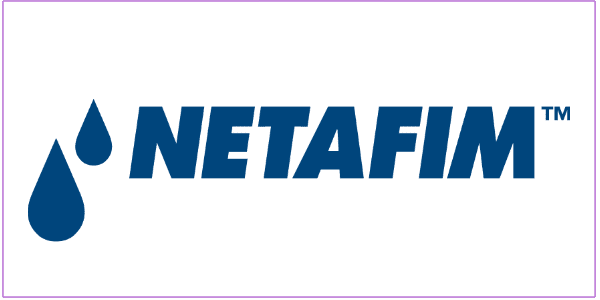Welcome To Our Irrigation Library!
Controlling Pressure By Vessels
Under Pressure: Unveiling the Versatility of Pressure Vessels

A pressure vessel is a container designed to hold gases or liquids at a pressure substantially different from the ambient pressure. These vessels are engineered to withstand the internal pressure and provide a safe environment for the contained substance. Pressure vessels are crucial components in various industries, including manufacturing, energy, chemical processing, and more.
The design and construction of pressure vessels adhere to strict standards and regulations to ensure safety and reliability. They come in various shapes and sizes, ranging from small cylinders to large industrial tanks, depending on the specific application and the pressure requirements.
These units typically consist of a cylindrical or spherical shell with end caps, and they may include additional components like inlets, outlets, and safety features. The choice of materials for construction depends on the nature of the substance being contained and the desired strength and corrosion resistance.
In the context of irrigation systems, a pressure vessel is often used to address issues related to pressure fluctuations. In scenarios where water usage is intermittent or low, a pressure vessel can act as a buffer, temporarily storing pressurized water. This helps maintain a more consistent pressure in the pipeline, reducing the frequency of pump activation. The vessel essentially smoothens out the pulsations in the system, preventing unnecessary stress on the pump and promoting overall system efficiency. Positioned strategically within the irrigation system, the unit becomes a stabilizing force. Its primary function is to extend the duration for which pressure is maintained in the pipeline, effectively reducing the frequency at which the pump kicks in.
The mechanism is simple yet ingenious. As the unit holds a reservoir of pressurized water, it becomes a buffer against the incessant pressure fluctuations. The pump, instead of engaging in a relentless cycle of starting and stopping, now operates with greater efficiency. The pressure vessel, acting as a temporal reservoir, provides a more consistent and measured release of water into the system, mitigating the stress on the pump.
In summary, these equipment play a vital role in maintaining stable pressure conditions within systems, preventing damage, and ensuring the safe containment of gases or liquids under different pressure levels.
The Gardener’s Rain always use the best quality irrigation parts and equipments from market-leader companies.






Installation Of A Pressure Vessel
In order to effectively manage the cyclical pressure drop phenomenon within an irrigation system, the installation of pressure vessels becomes paramount. These vessels are strategically positioned along the water distribution line. They are serving as vital reservoirs that store pressurized water for temporary periods. By carefully considering the size and location of these vessels, optimal functionality is achieved while minimizing stress on the various components of the irrigation system.
The placement of pressure vessels at strategic points along the water distribution line is essential to ensure the efficient operation of the irrigation system. These vessels act as buffers, absorbing the fluctuations in water pressure that occur during the cyclic nature of the system. By temporarily storing the pressurized water, they help to mitigate pressure drops that can negatively impact the overall performance of the irrigation system.
When determining the appropriate size and location for these pressure vessels, careful consideration is given to various factors. The vessel’s size is selected based on the specific needs of the irrigation system. Factors such as the water demand, flow rate, and system capacity are taken into account. By choosing the appropriate size, the pressure vessel can effectively store enough water to compensate for pressure drops without compromising the system’s functionality.
Equally important is the strategic positioning of these pressure vessels within the irrigation system. They are strategically placed at key points along the water distribution line. Why? Because most pressure drop issues are most likely to occur in this section. This strategic placement helps ensure that the pressure vessel is in close proximity to the areas that require immediate compensation for pressure fluctuations. By doing so, the pressure vessels can efficiently respond to pressure drops. Thereby they can maintain a consistent and reliable water supply throughout the entire irrigation system.
Furthermore, the location of the pressure vessels is carefully selected to minimize stress on the irrigation components. By strategically positioning the vessels, the distance traveled by the water to reach them is minimized, reducing the potential strain on the system’s pipes, valves, and other components. This not only enhances the longevity of the irrigation system but also reduces the likelihood of costly repairs or replacements due to excessive stress.
In conclusion, the installation of pressure vessels within an irrigation system plays a crucial role in managing the cyclical pressure drop phenomenon. By strategically placing these vessels along the water distribution line, they act as reservoirs, temporarily storing pressurized water to mitigate pressure drops. Careful consideration is given to the size and location of these vessels to ensure optimal functionality and minimal stress on the irrigation components, thereby enhancing the overall efficiency and longevity of the system.
Maintenance
Maintenance of vessels is a testament to their reliability. Routine inspections involve assessing the vessel’s structural integrity, checking for potential corrosion, and verifying the effectiveness of pressure relief mechanisms. Periodic draining and flushing further contribute to sustained performance.
Mainenance tasks are part of our Two-Visit Subscription plan.
In the confident realm of irrigation engineering, pressure vessels emerge as stalwart guardians, mastering the ebb and flow of water dynamics. Their presence guarantees a consistent, reliable water supply, fostering a flourishing landscape with unwavering precision. As silent sentinels in the irrigation narrative, pressure vessels embody the essence of efficiency and durability, ensuring the seamless orchestration of water across cultivated terrains.
